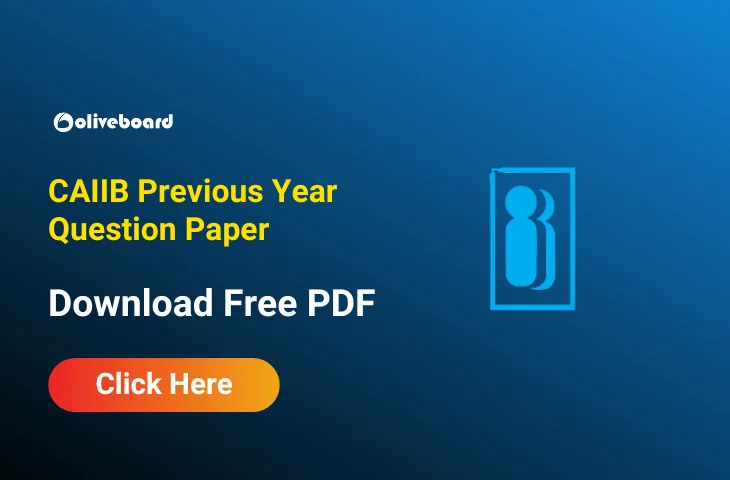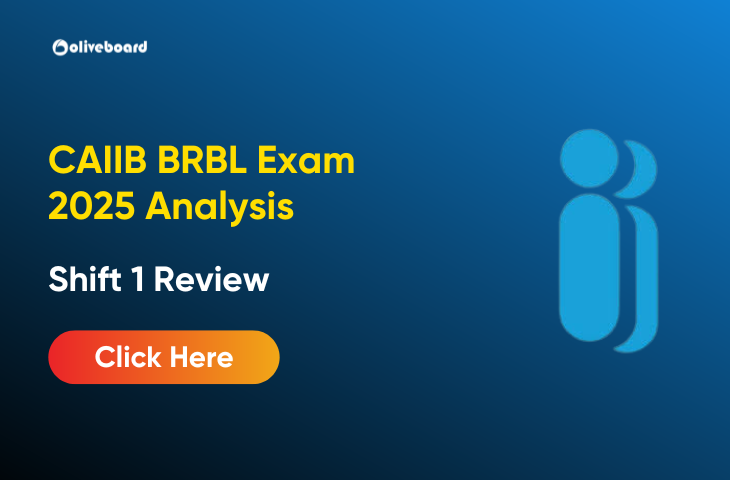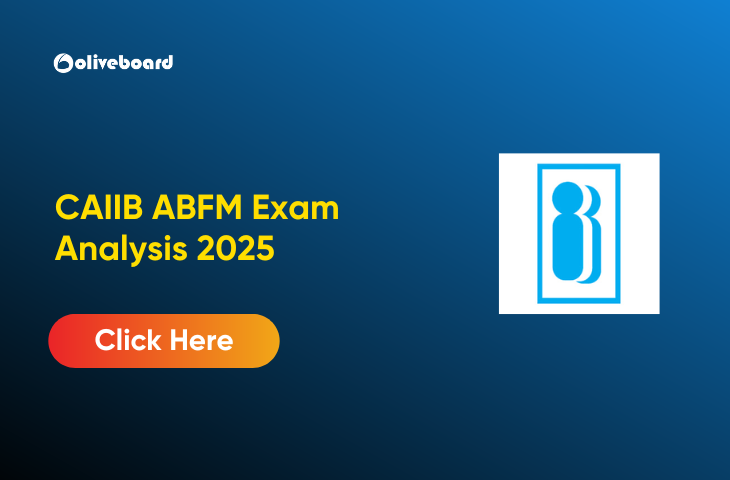CAIIB ABFM Highest Weightage Topics: The CAIIB (Certified Associate of the Indian Institute of Bankers) exam is an important qualification for banking professionals looking to enhance their careers. One of the most important papers in this exam is ABFM (Advanced Business & Financial Management). This article will help you focus on the CAIIB ABFM highest weightage topics, which are essential for your preparation.
What is CAIIB ABFM?
The CAIIB ABFM exam tests your knowledge of business and financial management principles, especially in the context of banking. The exam consists of 100 multiple-choice questions (MCQs) spread across different sections. The aim is to assess your ability to apply financial management concepts in real-world banking situations.
Topics in CAIIB ABFM
The following are the highest weightage topics in the CAIIB ABFM exam. By focusing on these areas, you can improve your chances of scoring well.
| Topic | Weightage |
| Financial Management | 20-25% |
| Financial Markets and Instruments | 15-20% |
| Capital Budgeting and Investment Decisions | 10-15% |
| Risk Management in Banks | 10-15% |
| International Financial Management | 10-12% |
| Corporate Governance and Ethics | 8-10% |
| Financial Reporting and Analysis | 7-10% |
| Mergers, Acquisitions & Restructuring | 7-8% |
1. Financial Management (20-25%)
This is the most important section of the ABFM exam. Key topics include:
- Capital Structure and Cost of Capital: How companies decide on the mix of debt and equity.
- Financial Planning and Forecasting: Tools for predicting the future financial needs of a business.
- Leverage: The impact of debt on a company’s financial performance.
- Working Capital Management: Managing short-term assets and liabilities.
Tips:
- Focus on understanding key financial ratios.
- Study real-life examples of financial management in banks.
2. Financial Markets and Instruments (15-20%)
This section is also important and covers topics like:
- Types of Financial Markets: Primary and secondary markets, money market, and capital market.
- Financial Instruments: Stocks, bonds, and derivatives.
- Market Efficiency: How well the markets reflect all available information.
Tips:
- Learn about the various financial instruments and how they work.
- Stay updated with current trends in global financial markets.
3. Capital Budgeting and Investment Decisions (10-15%)
Capital budgeting helps businesses make long-term investment decisions. Key areas include:
- NPV (Net Present Value) and IRR (Internal Rate of Return): Tools for evaluating investments.
- Payback Period and Profitability Index: Methods to assess project profitability.
- Risk in Capital Budgeting: Evaluating potential risks when making investment decisions.
Tips:
- Master the calculations for NPV, IRR, and payback periods.
- Practice case studies on investment decisions.
4. Risk Management in Banks (10-15%)
Understanding risk management is crucial in banking. Important topics include:
- Types of Risks: Credit, market, operational, and liquidity risks.
- Risk Measurement: Techniques like Value at Risk (VaR), stress testing, and scenario analysis.
- Risk Management Framework: Policies and strategies used by banks to manage risks.
Tips:
- Learn about the tools and frameworks used in banking for risk management.
- Study regulations like Basel III that impact risk management.
5. International Financial Management (10-12%)
This section deals with managing finance in a global context. Topics include:
- Foreign Exchange Market: How exchange rates are determined and how currency risks are managed.
- International Financial Institutions: The roles of the IMF, World Bank, and other organizations.
- Global Financial Crisis: Causes, effects, and lessons learned from past global financial crises.
Tips:
- Focus on understanding currency exchange and its impact on financial decisions.
- Stay informed about the latest trends in international finance.
6. Corporate Governance and Ethics (8-10%)
Corporate governance ensures companies are run ethically and responsibly. Key areas to study:
- Corporate Governance Principles: The roles of boards, committees, and shareholders in decision-making.
- Ethics in Financial Management: The importance of ethics in making financial decisions.
- Regulations and Laws: Key laws and guidelines that enforce ethical behavior in businesses.
Tips:
- Study real-life examples of good and poor corporate governance.
- Understand the ethical standards required in financial management.
7. Financial Reporting and Analysis (7-10%)
This section covers the analysis of financial reports and the tools used to assess a company’s financial health. Topics include:
- Financial Statements: Balance sheet, profit & loss account, and cash flow statement.
- Ratio Analysis: Key ratios like liquidity, profitability, and leverage ratios.
- Reporting Standards: Learn the differences between IFRS and GAAP and how they affect financial reporting.
Tips:
- Practice interpreting financial statements.
- Learn to calculate and interpret financial ratios.
8. Mergers, Acquisitions, and Restructuring (7-8%)
This section focuses on corporate restructuring activities, including mergers and acquisitions (M&As). Topics include:
- Types of Mergers: Horizontal, vertical, and conglomerate mergers.
- Valuation Techniques: Methods to value companies during mergers or acquisitions.
- Post-Merger Integration: Challenges and strategies for integrating companies after an M&A.
Tips:
- Understand why companies merge or acquire other companies.
- Learn about the challenges and strategies involved in M&As.
Study Plan for CAIIB ABFM
Here is a study plan to help you prepare for the CAIIB ABFM exam:
Week 1-2: Focus on Financial Management
- Study the basics of capital structure, working capital, and financial ratios.
- Practice calculations related to financial management.
Week 3-4: Study Financial Markets and Capital Budgeting
- Learn about financial instruments and markets.
- Practice solving problems related to NPV and IRR.
Week 5-6: Risk Management and International Finance
- Study the types of risks banks face and how to manage them.
- Understand the basics of international finance and forex markets.
Week 7: Corporate Governance and Financial Reporting
- Study corporate governance principles and financial reporting standards.
- Practice ratio analysis and interpret financial statements.
Week 8: Mergers and Acquisitions
- Focus on M&A types, valuation techniques, and post-merger integration.
Final Week: Revision and Mock Tests
- Revise all topics.
- Take mock tests to assess your preparation.
Also check CAIIB ABFM Syllabus 2024
Conclusion
Focusing on the CAIIB ABFM highest weightage topics is a smart strategy to ensure a strong performance in the exam. By mastering topics like Financial Management, Risk Management, and Mergers & Acquisitions, you will be well-prepared to tackle the ABFM exam confidently. Stick to a structured study plan, practice regularly, and stay focused on the key areas to achieve success.
CAIIB ABFM Highest Weightage Topics – FAQs
Ans. Financial Management, Risk Management, and Financial Markets are the key topics with the highest weightage.
Ans. Financial Management carries 20-25% of the total weightage.
Ans. It includes types of markets, financial instruments, and market efficiency.
Ans. Risk Management covers crucial concepts like credit, market, and operational risks, contributing 10-15% weightage.
- CAIIB BRBL Questions with Detailed Solutions and Answers

- CAIIB Previous Year Question Paper, Download Free PDF

- CAIIB Electives Exam Analysis 2025, December All Paper Review

- CAIIB BRBL Exam Analysis 2025, December Cycle Review

- CAIIB ABFM Exam Analysis 2025, 13th December Review

- CAIIB BFM Exam Analysis 2025, 7th December Difficulty Level


Hello there! I’m a dedicated Government Job aspirant turned passionate writer & content marketer. My blogs are a one-stop destination for accurate and comprehensive information on exams like Regulatory Bodies, Banking, SSC, State PSCs, and more. I’m on a mission to provide you with all the details you need, conveniently in one place. When I’m not writing and marketing, you’ll find me happily experimenting in the kitchen, cooking up delightful treats. Join me on this journey of knowledge and flavors!
